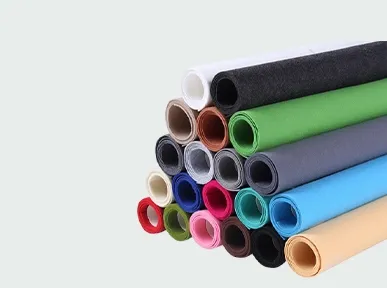Essential Supplies for Successful Wet Felting Projects and Techniques You Should Know
Exploring Wet Felting Supplies A Guide to Getting Started
Wet felting, a timeless craft, allows artists to transform loose wool fibers into beautiful, durable textiles through the use of water, soap, and agitation. Whether you are a beginner or an experienced felter looking to expand your toolkit, understanding the supplies needed for wet felting is essential. This article will explore key supplies, helping you embark on your felting journey with confidence.
1. Wool Fibers
The heart of any wet felting project is the wool itself. There are various types of wool fibers available, each offering unique qualities that can affect the texture and final appearance of your piece. Merino wool, known for its softness and fine fibers, is a popular choice for beginners. It felts quickly and provides a luxurious finish. Other options include Corriedale, Shetland, and Romney, each contributing different properties to the felt, such as sturdiness or elasticity. When selecting wool, consider the end use of your project—lighter, softer wool is great for garments, while coarser wool may be better for rugs or bags.
2. Soap
Soap plays a crucial role in the wet felting process. It reduces the surface tension of the water, allowing the fibers to interlock more easily. Any mild soap can be used; however, many felters prefer olive oil soap or castile soap due to their natural ingredients and effectiveness. The soap not only aids in felting but also helps to lubricate the fibers, making the process smoother and more enjoyable.
3. Water
Water is essential in wet felting as it activates the felting process. It’s important to use warm, but not boiling, water. The heat helps the wool fibers to open up and become more receptive to interlocking. Additionally, the water's temperature can impact the speed of the felting process; warmer water tends to speed things up. Many felters recommend using a basin or a bowl to contain the water and minimize mess during the process.
4. Agitation Equipment
wet felting supplies

To felt wool effectively, agitation is necessary. You can use a variety of methods for this step, including rubbing the fibers with your hands. However, many crafters utilize tools like bubble wrap, a deck brush, or even a felting mat to help in the agitation process. Bubble wrap can be particularly useful when working with larger pieces, as the raised bubbles create friction that encourages the fibers to bond.
5. Surface and Work Area
Creating a comfortable workspace is vital for any crafting endeavor. A large, flat surface covered with a plastic tablecloth or a dedicated work mat will protect your furniture and allow you to lay out your materials easily. It’s also wise to have some towels handy to absorb excess water and clean up spills.
Though wet felting is generally a safe process, wearing an apron can protect your clothing from dirt and soap. Additionally, rubber gloves can be beneficial, especially for those with sensitive skin or allergies to soap.
7. Optional Extras
Once you've mastered the basics, you might want to explore optional supplies to enhance your felting projects. These can include dyes for coloring wool, additional embellishments like silk fibers or yarn for decorative effects, and specialized tools such as felting needles for combining techniques.
Conclusion
With the right supplies in hand, wet felting can be an incredibly rewarding and creative process. As you gather your wool, soap, water, and other materials, remember that practice is key to mastering the technique. Enjoy the journey of exploring this unique craft, and let your creativity flourish as you transform simple fibers into stunning works of art. Happy felting!
-
What Makes Felt a Great Choice?NewsNov.19,2024
-
Total Mixed Ration (TMR) Feed for CattleNewsNov.19,2024
-
The Ultimate Guide for Felt Polishing WheelsNewsNov.19,2024
-
Industrial Felt for Various ApplicationsNewsNov.19,2024
-
Felt Makeup Bags and Inserts BagsNewsNov.19,2024
-
Choosing the Right Hotel TowelsNewsNov.19,2024
-
Your Go-To Guide For Affordable Wholesale Wool FeltsNewsOct.31,2024







